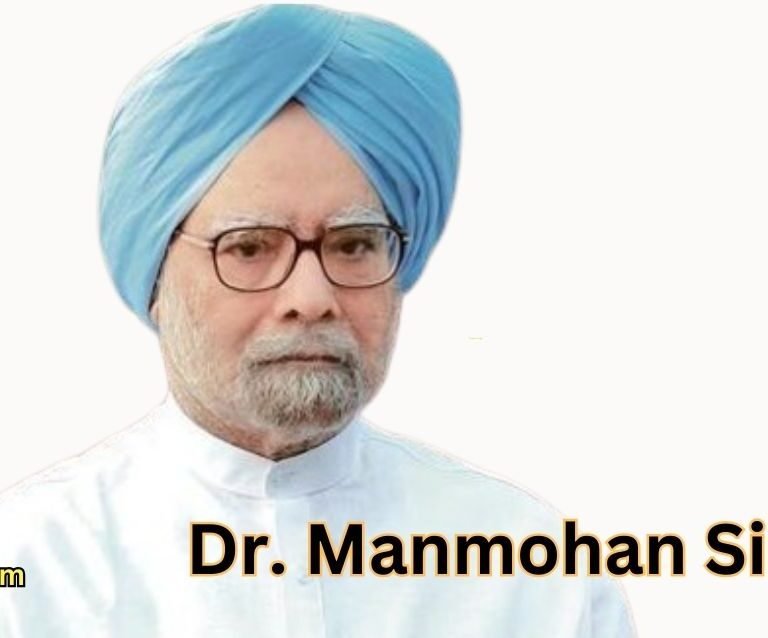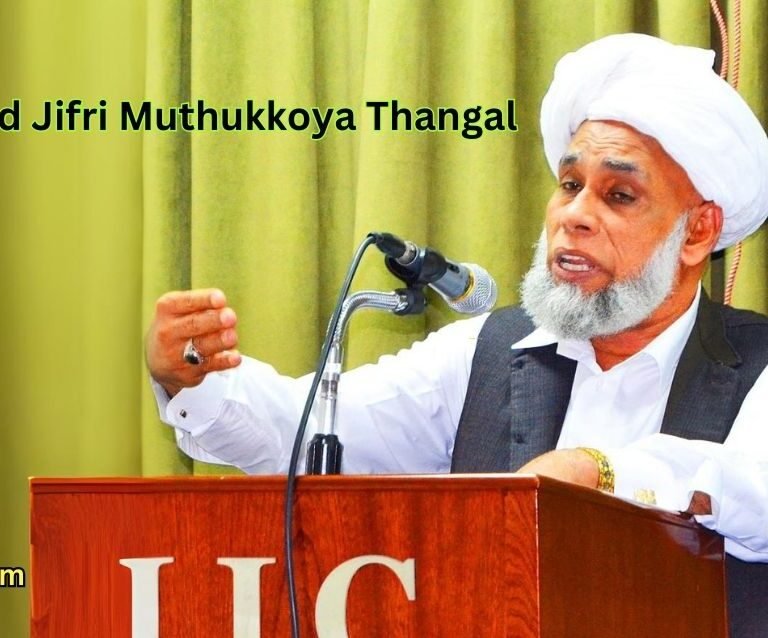Early Life and Background
Dr. A.P.J. Abdul Kalam, fondly remembered as the ‘Missile Man of India,’ had a remarkably humble beginning in the quaint town of Rameswaram, Tamil Nadu. Born on October 15, 1931, into a modest Muslim family, he grew up in an environment rich with values such as hard work, simplicity, and dedication. His father, Jainulabdeen, was a devout and disciplined individual who served as an imam at the local mosque and also rented boats to fishermen. Despite the family’s limited financial resources, his father’s unwavering devotion and principled life left a lasting impression on young Kalam.
Dr. Kalam’s mother, Ashiamma, was a caring and supportive homemaker who played an equally significant role in shaping his early outlook on life. Amidst the backdrop of simplicity and moral integrity that defined his home, Kalam absorbed the values of frugality, self-reliance, and empathy. These virtues became foundational pillars that guided him throughout his life’s journey. The sense of community and spirituality prevalent in Rameswaram also contributed to his well-rounded character, nurturing a profound respect for all religions and cultures.
Kalam’s early education took place at the Rameswaram Elementary School, where he showcased an innate curiosity and a thirst for knowledge. His teachers recognized his keen intellect and encouraged him to pursue his dreams despite the economic challenges his family faced. The dedication and discipline instilled by his father, along with the love and support from his mother, fueled his determination to transcend his circumstances and carve out a path of excellence.
Through the stories of his early life, it is evident that Dr. A.P.J. Abdul Kalam’s upbringing in Rameswaram played a pivotal role in shaping his innate qualities of resilience, humility, and an unwavering commitment to self-improvement. These foundational experiences not only molded his character but also set the stage for his illustrious career and remarkable contributions to the nation.
Educational Journey
Dr. A.P.J. Abdul Kalam’s educational journey began in the serene town of Rameswaram, where he attended the Schwartz Higher Secondary School. His early education was marked by a keen interest in learning, nurtured by both his teachers and his supportive family. From a young age, Kalam exhibited an exceptional aptitude for mathematics and science, laying the foundation for his future scholarly endeavors.
After completing his schooling in Rameswaram, Kalam pursued higher education at St. Joseph’s College in Tiruchirappalli, where he graduated with a degree in Physics in 1954. His time at St. Joseph’s was pivotal in shaping his scientific mindset and further igniting his passion for aerospace. Despite facing financial difficulties and limited resources, Kalam’s determination and hard work ensured he excelled in his studies, earning the respect of his peers and mentors.
The next significant milestone in Kalam’s educational journey was his admission to the Madras Institute of Technology (MIT) to study aerospace engineering. Gaining admission to this prestigious institution was a remarkable achievement for Kalam, as seats were limited and the competition fierce. At MIT, he encountered both academic challenges and opportunities to innovate. It was here that Kalam’s resilience was truly tested. Known for his perseverance, he tackled complex projects and rigorous coursework with unwavering dedication.
One notable episode during his time at MIT was when he led a project to design a low-level attack aircraft in his final year. The project’s success highlighted his practical engineering skills and ability to lead a team. It also underscored his potential to contribute to India’s aerospace and defense sectors. Kalam’s academic achievements at MIT not only enhanced his technical knowledge but also molded his character, embedding a sense of discipline and purpose that would guide his future career.
Kalam’s educational journey is a testament to his indefatigable spirit and relentless pursuit of knowledge. Despite the numerous obstacles he faced, his academic experiences cultivated a robust foundation that propelled him to become one of India’s foremost scientists and eventually, the President of India. His story continues to inspire countless students and professionals worldwide to strive for excellence despite challenges.
Early Career in Aerospace and Defense
Dr. A.P.J. Abdul Kalam’s early professional life was deeply rooted in his fascination with aerospace and defense technologies. After graduating from the Madras Institute of Technology with a degree in aerospace engineering, Kalam joined the Defense Research and Development Organisation (DRDO) in 1958. His role at DRDO marked the beginning of a long and illustrious career contributing to India’s defense capabilities.
At DRDO, Kalam worked on the development of a small hovercraft, but his ambitions soon led him to larger projects. Recognizing his potential and passion for space science, he transferred to the Indian Space Research Organisation (ISRO) in 1969. This move proved to be pivotal, as Kalam immersed himself in key projects that would propel India’s civilian space program to new heights.
One of his most notable contributions during his tenure at ISRO was his role as the project director of SLV-III, India’s first indigenously designed and produced satellite launch vehicle. Under Kalam’s guidance, the project faced numerous challenges, yet his determination and leadership ensured its success. On July 18, 1980, SLV-III successfully deployed the Rohini satellite into near-earth orbit, marking a significant milestone for the Indian space program.
Kalam’s pioneering work extended beyond SLV-III. He played an instrumental role in the development of the Polar Satellite Launch Vehicle (PSLV), which became a cornerstone of India’s space strategy. The PSLV was a critical achievement that contributed to the successful launch of various vital satellites, further solidifying India’s position in the global space arena.
Throughout his early career, Dr. Kalam’s relentless drive and dedication were evident. His contributions at DRDO and ISRO laid the groundwork for advancements that would continue to benefit India’s technological and scientific aspirations for decades to come. From developing key defense technologies to pioneering civilian space programs, Kalam’s early professional journey set the stage for his numerous subsequent achievements and his eventual recognition as a visionary scientist and leader.
The Missile Man of India
Dr. A.P.J. Abdul Kalam’s epithet as the ‘Missile Man of India’ is not merely a title but a testament to his extraordinary contributions to India’s defense capabilities. His journey began at the Indian Space Research Organization (ISRO), where he played a crucial role in developing the Satellite Launch Vehicle (SLV-III), which successfully deployed the Rohini satellite in near-earth orbit in 1980. This project marked India’s entry into the space club, but it was just the beginning of Dr. Kalam’s illustrious career.
Transferring his prowess to the Defence Research and Development Organisation (DRDO), Dr. Kalam spearheaded the Integrated Guided Missile Development Programme (IGMDP), a landmark initiative that altered India’s strategic defense capabilities. Under his leadership, DRDO developed a suite of ballistic missiles, including the Prithvi and Agni missiles, which have since become the cornerstone of India’s missile arsenal.
The Prithvi missile series, with its variants, enhanced India’s short and medium-range battlefield capabilities, while the Agni missile series extended India’s reach with its intermediate to intercontinental nuclear-capable ballistic missiles. These innovations were instrumental in establishing India’s prowess in missile technology and solidifying its defense posture globally.
Dr. Kalam’s role was not limited to technical development; his innovative approach and visionary leadership led to successful collaborations and synergy among various research institutions and laboratories. Projects like the guided missiles program were complex and required seamless coordination and a multidisciplinary approach, which Dr. Kalam managed adeptly. His ability to motivate and lead teams was instrumental in completing these ambitious projects on schedule.
His relentless dedication and unmatched technical skills earned him the moniker ‘Missile Man of India,’ a fitting tribute to his pivotal role in advancing India’s defense technology and space science. Through his contributions, Dr. Kalam not only enhanced India’s defense capabilities but also inspired the next generation of scientists, engineers, and innovators, ensuring a lasting legacy that continues to propel the nation forward.
Role in Pokhran-II Nuclear Tests
Dr. A.P.J. Abdul Kalam played a pivotal role in India’s Pokhran-II nuclear tests conducted in May 1998. As the chief of the Defence Research and Development Organisation (DRDO) and a key scientific advisor to the government, Kalam’s involvement was crucial in both the organizational and technical aspects of these tests. His leadership, detailed planning, and multifaceted coordination across multiple agencies ensured the successful execution of this strategic initiative.
The preparations for the Pokhran-II tests were marked by meticulous planning and top-secret operations. Under Kalam’s guidance, the DRDO collaborated extensively with the Atomic Energy Commission (AEC) to develop and test a series of nuclear devices. These efforts necessitated advanced technological innovations and rigorous scientific research, which Kalam oversaw with precision. His technical expertise and strategic foresight were critical in maintaining operational security, thus evading international scrutiny and potential repercussions.
On the political front, Kalam worked closely with then-Prime Minister Atal Bihari Vajpayee and other senior government officials. His role involved not only scientific and technical advocacy but also strategic communication to ensure that the leadership was well-informed and aligned with the objectives. Kalam’s contributions were instrumental in presenting a united front and garnering requisite political support for the nuclear tests.
The successful execution of the Pokhran-II tests had profound implications for India’s defense capabilities. It demonstrated India’s advanced technological prowess and elevated its status as a nuclear power. The aftermath of the tests saw a mixed set of reactions globally, with significant geopolitical ramifications. Domestically, however, Kalam emerged as a national hero, symbolizing India’s scientific and strategic ascent. His role in the Pokhran-II nuclear tests not only reinforced India’s defense posture but also marked a defining moment in his illustrious career, highlighting his enduring legacy in shaping the nation’s scientific and strategic landscape.
Presidency: The People’s President
Dr. A.P.J. Abdul Kalam’s election as the 11th President of India in 2002 marked a significant chapter in the nation’s history. Endorsed by both major political parties, his presidency symbolized unity and optimism at a time of political turbulence. Dr. Kalam’s vision for India was transformative, focusing on technological progress, sustainable development, and empowering youth. He envisioned India as a developed nation by 2020, a roadmap detailed in his book “India 2020: A Vision for the New Millennium.”
During his tenure, Dr. Kalam initiated several programs aimed at harnessing scientific knowledge to solve rural problems, promoting healthcare, and encouraging innovation among the youth. His concept of PURA (Providing Urban Amenities to Rural Areas) sought to bridge the urban-rural divide, reflecting his commitment to inclusive development. Dr. Kalam’s presidency was not just about policies and programs; it was equally about his profound ability to connect with the people, especially the younger generation. His numerous interactions with students across the country inspired a newfound respect for scientific inquiry and public service.
One of the most memorable moments of his presidency was his address to the European Parliament in 2007, where he presented his vision of world peace and prosperity. His speech resonated with global leaders, reflecting his stature as a thinker far beyond Indian borders. At home, his open-door policy and approachable demeanor endeared him to citizens, earning him the affectionate title of ‘People’s President.’ Anecdotes of children writing to him and receiving personal responses highlight his belief in nurturing the potential of the nation’s future leaders.
Dr. Kalam’s tenure as President was characterized by an earnest commitment to his role as a servant of the people. A scientist by training and a visionary at heart, his presidency left an indelible mark on India’s collective consciousness, reinforcing the profound impact a leader can have on the spirit and direction of a nation.
Life After Presidency
After completing his term as the 11th President of India in 2007, Dr. A.P.J. Abdul Kalam seamlessly transitioned back to civilian life. True to his spirit, Kalam’s post-presidency years were marked by the same fervor and dedication that characterized his time in office. Despite exiting the political sphere, he embarked on a journey to continue influencing and nurturing the intellectual and moral fabric of the nation.
Dr. Kalam re-established himself as an educator, taking on roles at various academic institutions across India. He became a visiting professor at esteemed universities such as the Indian Institute of Management Ahmedabad and the Indian Institute of Technology (IIT) Madras. His presence in these institutions was not merely ceremonial; he actively engaged with students and faculty, delivering profound lectures on technology, leadership, and national development.
Kalam’s prowess as a writer was notably prolific during these years. He authored numerous books that reflected his vision for a progressive India. Works such as “Turning Points: A Journey Through Challenges” and “Guiding Souls: Dialogues on the Purpose of Life” were widely acclaimed. These writings offered deep insights into his thoughts on personal and national growth, continually emphasizing the importance of education and innovation.
His commitment to education extended beyond the boundaries of academia. Kalam’s genuine affection for the youth of India manifested in frequent interactions with them. Through countless lectures, workshops, and public appearances, he directly addressed and inspired millions of young minds. He ardently believed in the potential of the younger generation to transform India into a developed nation. His popular speech, “Ignited Minds,” became synonymous with his passion for empowering the youth.
Dr. Kalam’s contributions were not limited to education and writing. He participated actively in various social causes, focusing on rural development, healthcare, and environmental sustainability. He founded the “What Can I Give” movement, urging individuals to contribute positively to society in their unique capacities. His tireless endeavors were aimed at fostering a sense of purpose and responsibility among citizens.
To this day, Dr. A.P.J. Abdul Kalam’s legacy as a former president who continued to serve his country with unwavering dedication remains an inspiration. His post-presidency phase is a testament to his belief in knowledge dissemination and youth empowerment as cornerstones for a prosperous future.
Legacy and Final Years
Dr. A.P.J. Abdul Kalam’s legacy is a testament to his unwavering dedication to India’s progress and his persistent pursuit of knowledge. His impact on India’s scientific community, his role in advancing the country’s defense capabilities, and his humanitarian values have left an indelible mark. As the 11th President of India, Kalam was beloved by the masses for his humility, intelligence, and unyielding commitment to youth and education. His initiatives to ignite young minds and foster a culture of innovation have continued to inspire generations beyond his tenure.
On July 27, 2015, during a lecture at the Indian Institute of Management (IIM) Shillong, Dr. Kalam suddenly collapsed. He was swiftly taken to Bethany Hospital, but despite the best efforts of the medical team, he could not be revived. His unexpected passing at the age of 83 left the nation in deep mourning. Tributes poured in from across the globe, with people from all walks of life honoring his contributions and expressing their profound grief.
The government of India declared a seven-day state mourning. Dr. Kalam’s body was airlifted to New Delhi and subsequently to his hometown of Rameswaram, where he was laid to rest with full state honors. The state funeral saw a convergence of people from various sectors – political leaders, scientists, students, and citizens – all united in their respect for “India’s Missile Man.” Prime Minister Narendra Modi, former President Pranab Mukherjee, and numerous other dignitaries attended the funeral, highlighting the high esteem in which Dr. Kalam was held.
The legacy of Dr. A.P.J. Abdul Kalam remains impactful through numerous educational initiatives and scientific endeavors that continue to draw inspiration from his life and work. His vision for India as a self-reliant and technologically advanced nation is still driving efforts in both governmental and private sectors. Dr. Kalam’s life teaches us that perseverance, service to society, and the pursuit of dreams can lead to lasting influence and respect, transcending boundaries and generations.









